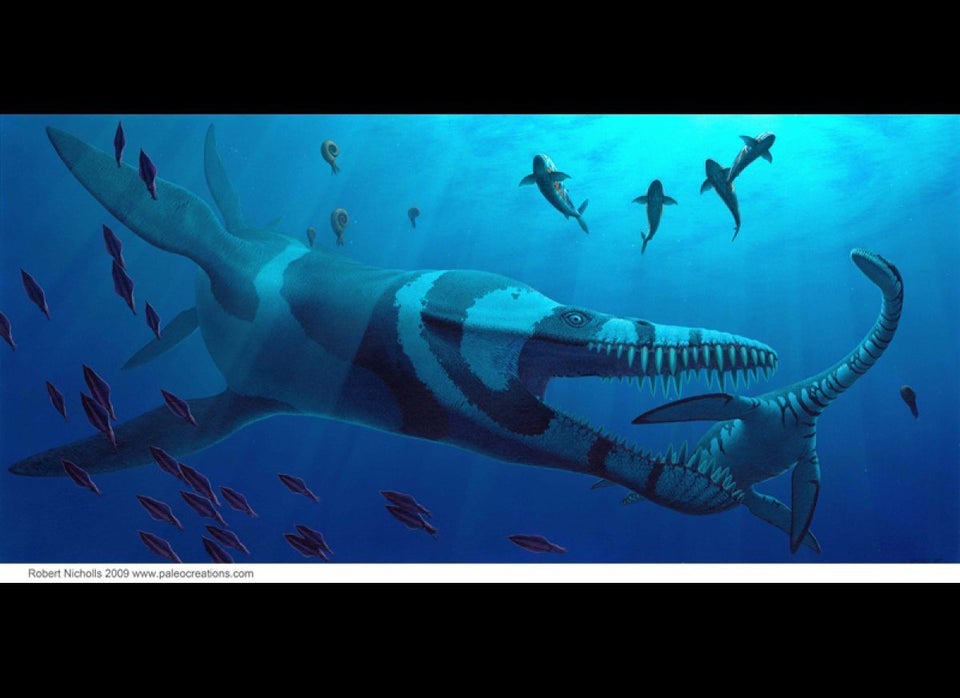)
High above the Arctic Circle, along an Alaskan river, palaeontologists have unearthed fossils of the first known tyrannosaur species at either pole.
The new animal comes from so far north that it is named Nanuqsaurus hoglundi, after the Inupiat word for polar bear (nanuq). Its existence near the top of the world shows that relatives of Tyrannosaurus rex survived and even thrived in extreme polar environments, some 70 million years ago.
Perhaps more significantly, Nanuqsaurus may be the first uncontested example of a pint-sized tyrannosaur. In life, the Alaskan dinosaur measured some 7 metres long — small when compared to T. rex, which stretched 12 metres from nose to tail.
“I never thought I’d see a dwarf tyrannosaur come to light,” says Thomas Carr, a palaeontologist at Carthage College in Kenosha, Wisconsin, who was not involved in the research.
Nanuqsaurus’s relatively small size may stem from the ecological pressures of hunting food in a landscape limited by six months of light and six months of dark. “There was something about that environment that selected for tyrannosaurs developing a smaller body size,” says Anthony Fiorillo, a palaeontologist at the Perot Museum of Nature and Science in Dallas, Texas. He and Ronald Tykoski, also of the Dallas museum, report the finding today in the journal PLoS ONE.
Light-bulb moment
Fiorillo and his colleagues dug up chunks of rock containing Nanuqsaurus fossils in 2006, as part of an ongoing project in Alaska’s North Slope region. Tykoski soon cleaned off part of a skull and several jaw fragments, but the scientists weren’t sure whether they had a dinosaur that was specific to the Arctic or just a northern example of a species known from other parts of the world.
“Only in the last year or so, after some other tyrannosaur papers came out, we were able to plug these fragments into those analyses — and a little light bulb went on over our heads,” says Tykoski. “We said, holy smokes, this thing really is different.”
Nanuqsaurus is closely related to, but much smaller than, T. rex and similar tyrannosaurs. The Nanuqsaurus fossils must come from a fully grown dinosaur, says Fiorillo, because one jaw section shows a distinctive peg-and-socket pattern that is found only in adult animals.
That telltale pattern suggests that Nanuqsaurus might not suffer the fate of Nanotyrannus lancensis, a controversial animal that some scientists think is a unique species of miniature tyrannosaur, and others think is just a baby T. rex. Nanuqsaurus “sets the standard for what a small adult tyrannosaur looks like”, Carr says.
Why it stayed small compared to other tyrannosaurs remains something of a mystery. Another meat-eating dinosaur that lived in Alaska at the time — a two-legged predator called Troodon — grew bigger in its northern version than it did down south. Nanuqsaurus follows the opposite trend.
Both Troodon and Nanuqsaurus would have had to cope with extreme seasonal swings, Fiorillo says. At the time they existed, Alaska was located at least as far north as today, although temperatures were warmer overall. The Arctic landscape would have experienced huge pulses of biological productivity every summer, followed by a bleak winter. Each species would have adapted in its own way to this changing environment, he says. “Something provided for an optimal body size for predators.”
For the latest study, the size of Nanuqsaurus was estimated by extrapolating from measurements of its skull, but finding other major bones, such as a femur, could help to nail down the precise size of the animal, says Carr.
At least some such finds are on their way. Almost as soon as Fiorillo and Tykoski approved the final manuscript describing Nanuqsaurus, they went back to the Alaskan rocks to find something new to work on — and stumbled on the other half of the new dinosaur's skull fragment.
This story originally appeared in Nature News.
